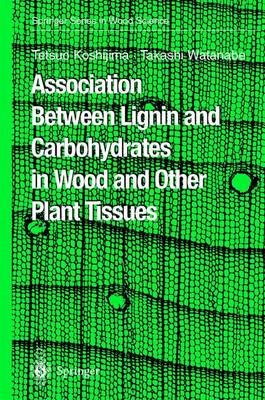Springer Series in Wood Science
1 total work
Association Between Lignin and Carbohydrates in Wood and Other Plant Tissues
by Tetsuo Koshijima and Takashi Watanabe
Published 27 February 2003
As in other scientific fields, the importance of boundary areas in wood research, such as that between lignin chemistry and hemicellulose chemis- try, continues to increase. Although the utilization of individual wood components has advanced to an appreciable extent, research into oligo- merie or polymerie compounds of two or more different components has made little progress. By contrast, in other fields, glycoproteins and pro te- oglycans have been found to form biochemical active centers in enzymes and microbes. The association between lignin and carbohydrates in lignified plants was first recognized in 1866. However, research has advanced slowly because of difficulty in the isolation and determination of wood glycocon- jugates, whieh likely have an important influence on the formation of wood, pulping behavior, pulp quality and digestibility by ruminants. Most plants contain both hydrophilie polysaccharides and hydrophobie lignins in their tissues.
Lignins have been recognized to not only give mechanieal strength or rigidity to a tree or wood, but also to prevent invasion by fungi, and provide cell wall material, especially in the tracheids and vessels that deliver water extracted from the soil to the top of woody plants. How- ever, in trees, lignins have been found to interact with the polysaccharides, partieularly hemicelluloses, with whieh they coexist, leading to the forma- tion of another chemical component, a kind of glycoconjugate. Therefore, it is necessary to inc1ude lignin or p-hydroxycinnamie acids in any discus- sion on wood hemieelluloses.
Lignins have been recognized to not only give mechanieal strength or rigidity to a tree or wood, but also to prevent invasion by fungi, and provide cell wall material, especially in the tracheids and vessels that deliver water extracted from the soil to the top of woody plants. How- ever, in trees, lignins have been found to interact with the polysaccharides, partieularly hemicelluloses, with whieh they coexist, leading to the forma- tion of another chemical component, a kind of glycoconjugate. Therefore, it is necessary to inc1ude lignin or p-hydroxycinnamie acids in any discus- sion on wood hemieelluloses.
